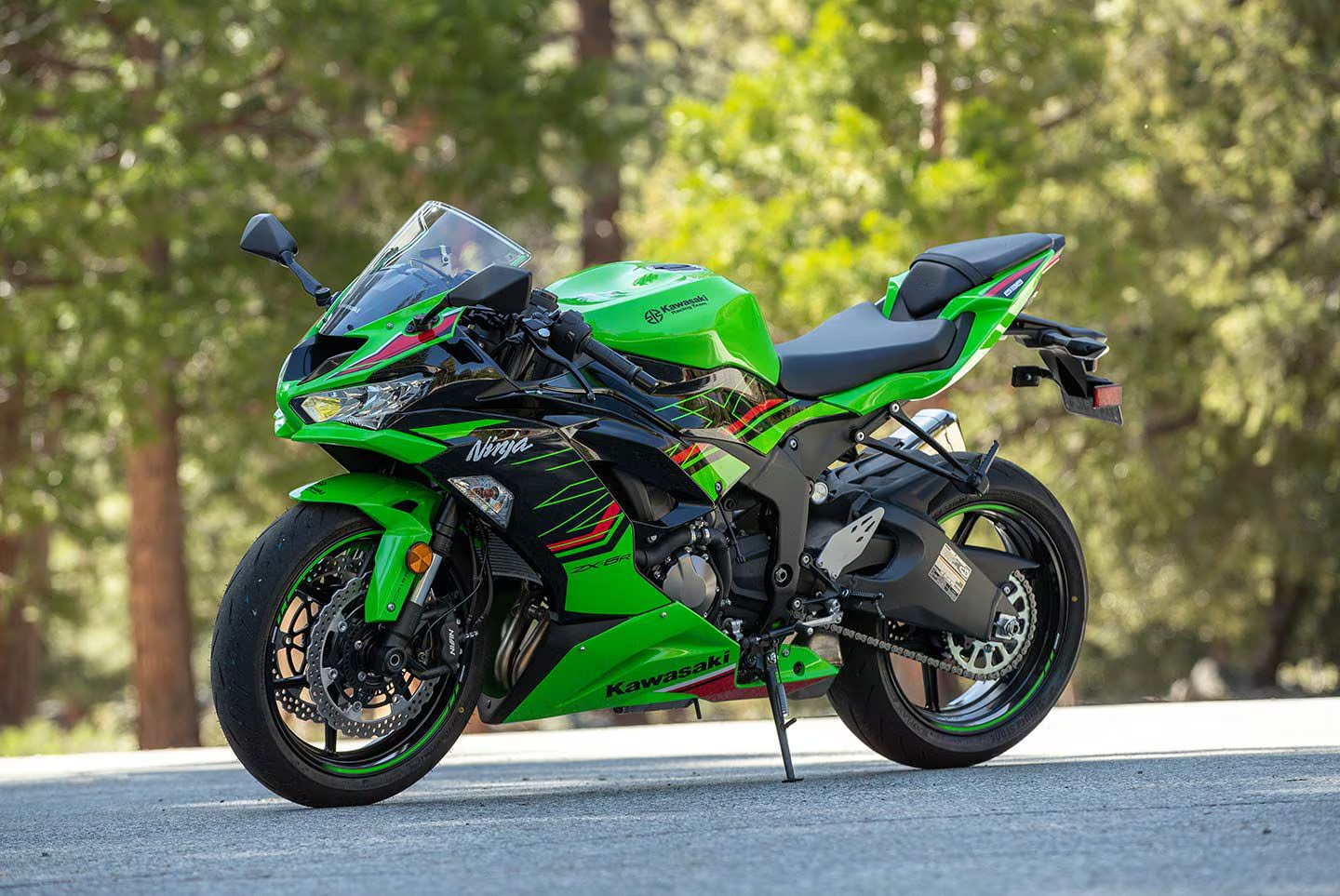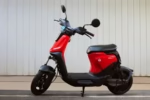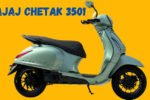The return of the Kawasaki Ninja ZX-6R to India in 2025 has caused a stir among sportbike enthusiasts. Known for its aggressive styling, track-ready performance, and modern electronics, the ZX-6R promises to deliver thrills like no other. But with Indian roads notorious for congestion and poor road conditions, can this middleweight supersport bike handle the daily grind? After real-world testing in major cities across India, here’s how the ZX-6R fares.
Performance on Indian Roads
The 2025 Kawasaki Ninja ZX-6R is powered by a 636cc inline-four engine, producing a substantial 128 PS of power. On highways, this bike feels right at home, offering a smooth, stable ride at triple-digit speeds with minimal vibrations. It’s a high-revving machine, providing plenty of excitement for enthusiasts who love to open it up on clear roads.
However, in city traffic, this power can become a double-edged sword. The clutch feels heavy during long, stop-and-go commutes, and frequent gear shifts can be tiring. In congested areas like Delhi or Mumbai, where traffic is dense, the bike’s potent engine might feel excessive. The heat management is improved from earlier versions but remains noticeable in peak summer, especially when stuck in slow-moving traffic.
Ride Quality
The ZX-6R features Showa Separate Function Big Piston forks at the front and a horizontal back-link rear suspension. This setup, designed for sporty performance, provides excellent road feedback and stability on smooth tarmac or highways. On open roads, the bike’s performance is superb, delivering a thrilling ride that is stable at high speeds.
But in the city, where road conditions are often less than ideal, the firm suspension setup becomes evident. Potholes, speed bumps, and rough surfaces result in more jolts than one would expect from a commuter bike or even a sport-tourer. While it’s not unbearable, it’s definitely not as plush as what comfort-oriented riders might prefer.
Fuel Efficiency
The ZX-6R’s fuel efficiency is decent considering its performance capabilities. During road testing, it returned 18–21 km/l in city conditions and up to 25 km/l on highways when ridden sensibly. While this isn’t outstanding compared to commuter bikes, it’s acceptable for a supersport like the ZX-6R.
For riders who only use the bike for weekend thrills or occasional city runs, this fuel economy is manageable. However, for those considering it for daily commuting in a city like Delhi or Mumbai, fuel costs may quickly add up, making it less practical in the long run.
Handling and Manoeuvrability
Weighing 198 kg (wet), the ZX-6R is relatively lightweight for a supersport, and it offers excellent balance at higher speeds. Its aggressive riding position, sharp rake, and low-set clip-ons allow for nimble handling through tight corners and quick lane changes on highways. It’s an absolute joy to ride through twisty roads or open stretches where the bike can stretch its legs.
But in congested urban traffic, the sporty riding posture becomes a challenge. The crouched position strains the wrists, back, and neck over time, especially during slow-moving traffic. Tight U-turns and parking maneuvers also become tricky, given the limited handlebar movement and the bike’s wider turning radius. So, while it’s agile on open roads, urban maneuvering requires more effort.
Practical Features
The 2025 Ninja ZX-6R is packed with high-tech features such as:
- Traction Control
- Power Modes
- Quickshifter
- Assist and Slipper Clutch
- TFT display with smartphone connectivity
These advanced features enhance the riding experience, making the ZX-6R feel like a premium machine. However, for daily use, it lacks several practical features. There is no storage space, the pillion seat offers minimal comfort, and the ground clearance of 130 mm requires caution when navigating speed breakers and rough roads.
While the tech makes it exciting for sport-oriented riders, the ZX-6R is far from being a daily commuter-focused bike.
Verdict – Daily Usable, But Only for the Passionate
The Kawasaki Ninja ZX-6R isn’t built for everyday commuting. It’s a machine designed for thrill, speed, and track-day excitement. That said, after testing it in Indian cities, it’s clear that the ZX-6R can be used daily—but with compromises.
If you’re a passionate rider who values performance over comfort and can deal with the inconveniences of city commuting—such as heavy clutch action, a crouched riding posture, and limited practicality—the ZX-6R will bring a smile to your face every time you ride. But if comfort, ease of use, and affordability are your priorities for daily commuting, this is not the bike for you.
In summary, the Ninja ZX-6R excels on the open highway and race tracks but is less suited to the day-to-day demands of Indian city roads. It’s perfect for those who are willing to sacrifice some daily comfort for the thrill of riding a performance-oriented supersport.
FAQs
Is the Kawasaki Ninja ZX-6R suitable for daily commuting in Indian cities?
The ZX-6R can be used daily but is not ideal for the constant stop-and-go traffic in Indian cities. It’s more suited for enthusiastic riders who can handle the compromises in comfort and practicality.
How does the ZX-6R handle rough Indian roads?
The bike’s firm suspension setup provides excellent performance on smooth roads but can feel harsh on uneven or pothole-ridden surfaces commonly found in cities.
What is the fuel efficiency of the ZX-6R?
The ZX-6R offers a fuel efficiency of around 18–21 km/l in the city and 25 km/l on highways, which is decent for a performance-oriented bike.
Can the ZX-6R be used for long commutes?
While the ZX-6R can handle long commutes, the heavy clutch, sporty riding posture, and limited pillion comfort make it less practical for everyday long rides in heavy traffic.
What are the key features of the 2025 Kawasaki Ninja ZX-6R?
The ZX-6R comes with modern rider aids like traction control, power modes, quickshifter, assist and slipper clutch, and a TFT display with smartphone connectivity, making it a tech-packed and premium motorcycle.




